 Miscellaneous
Miscellaneous  Miscellaneous
Miscellaneous  History
History 10 Huge Historical Events That Happened on Christmas Eve
 Music
Music 10 Surprising Origin Stories of Your Favorite Holiday Songs
 History
History 10 Less Than Jolly Events That Occurred on December 25
 Weird Stuff
Weird Stuff 10 Funny Ways That Researchers Overthink Christmas
 Politics
Politics 10 Political Scandals That Sent Crowds Into the Streets
 Weird Stuff
Weird Stuff Ten Bizarre Facts About The Doge Meme
 Our World
Our World 10 Ways Your Christmas Tree Is More Lit Than You Think
 Movies and TV
Movies and TV The 10 Coolest Stars to Set Sail on The Love Boat
 History
History 10 Things You Didn’t Know About the American National Anthem
 Miscellaneous
Miscellaneous Top 10 Things Crypto Was Supposed to Change & What Actually Did
 History
History 10 Huge Historical Events That Happened on Christmas Eve
 Music
Music 10 Surprising Origin Stories of Your Favorite Holiday Songs
Who's Behind Listverse?

Jamie Frater
Head Editor
Jamie founded Listverse due to an insatiable desire to share fascinating, obscure, and bizarre facts. He has been a guest speaker on numerous national radio and television stations and is a five time published author.
More About Us History
History 10 Less Than Jolly Events That Occurred on December 25
 Weird Stuff
Weird Stuff 10 Funny Ways That Researchers Overthink Christmas
 Politics
Politics 10 Political Scandals That Sent Crowds Into the Streets
 Weird Stuff
Weird Stuff Ten Bizarre Facts About The Doge Meme
 Our World
Our World 10 Ways Your Christmas Tree Is More Lit Than You Think
 Movies and TV
Movies and TV The 10 Coolest Stars to Set Sail on The Love Boat
 History
History 10 Things You Didn’t Know About the American National Anthem
10 Different Types Of Hallucinations That Humans Experience
Throughout the ages, humans have sought different ways to change their perceptions and alter their states of being. Many ordinary people, spiritual gurus, monks, and even priests have relied on shifting their conscious experience to achieve some sort of enlightenment or even simple joy.
Euphoria, confusion, and delirium have all inspired and transformed people. Many methods to achieve these ends come with a truly phenomenal experience: hallucinations. One Swiss scientist defined hallucinations as “perceptions without the corresponding stimuli.”
Hallucinations can be terrifying, especially if you’re not expecting them to happen. But for some individuals, they’re downright fun. Here are 10 different types of hallucinations that humans experience and what they’re all about.
10 Excitation
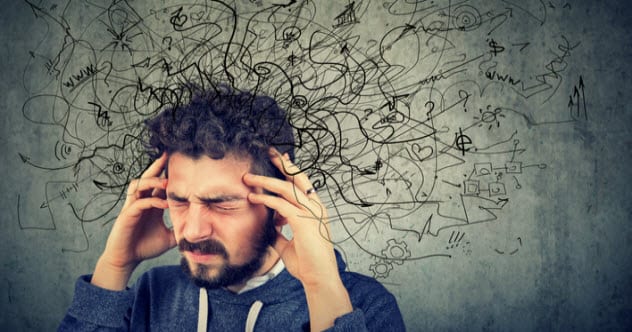
Yes, something as simple as excitation can cause hallucinations and often does. The state of the brain which influences the mind and all its perceptions is a paramount consideration when it comes to the nature and origin of hallucinations, which can often result as a break from the homeostasis of the resting, so-called normal state of brain functioning.
In some people, things like anxiety can trigger hallucinations and the psychosis that sometimes ensues. Anxiety is not experienced in a calm state of mind. It’s directly caused by an overstimulation of the brain, much like what happens when people ingest certain drugs.
Hallucinations through excitation and anxiety aren’t necessarily signs or symptoms of an underlying mental illness. They’re simply a physiological response to the stress (or perceived stress) that the brain is experiencing.
These states of mind and the hallucinations—the vivid, terrifying light, the loud noises which didn’t really happen, the chatter which sounds like voices in the wind—all of this can happen to sane, ordinary people under the right conditions. So if you experience anxiety or excitation that causes hallucinations, you’re not alone. A lot of people share this experience.[1]
9 Sleep Deprivation
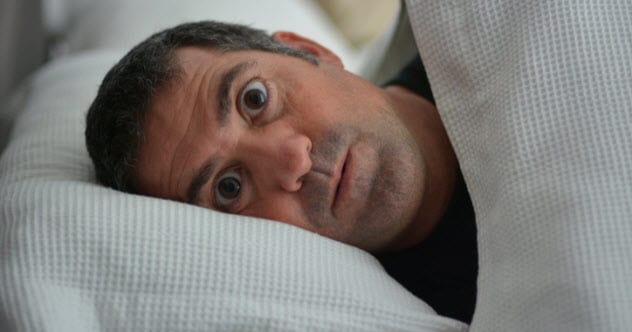
Sleep deprivation is something that college students often experience religiously, and religious people often use it as a means of studying spirituality. But in all cases, under the right conditions, you might just end up with hallucinations.
Most of us have experienced this—the tiny, dancing movements that you know aren’t real, that feel so real, and that are just outside your focus. By and large, the mind comes from the brain as the various centers of the brain process their respective portions of our consciousness, which form a cohesive experience.
That said, if one goes for long periods of time without sleep, these centers of the brain and their constituent neurons begin to degrade, which eventually causes an inability for the brain as a whole to create a unified experience of consciousness. Thus, it is unable to make reasonable sense of the stimuli from the outside world.
Sleep deprivation mainly targets the visual cortex, and approximately 80 percent of people experience visual hallucinations when they don’t get enough sleep. Auditory hallucinations don’t occur with sleep deprivation.[2]
Not all of this is under our control as it’s more than just staying up late watching TV. A slew of conditions, such as snoring, can prevent someone from getting enough sleep and send him down a path to hallucination. Sometimes, it’s just minor things that you see out of the corner of your eyes. But for some people, the hallucinations become bizarre, extreme, seemingly very real, and even nightmarish.
8 Hypnagogic Hallucinations

Hypnagogic hallucinations are the next most common type of hallucination caused by things relating to sleep. Experienced by 37 percent of the population, this is something we grow out of with age for the most part.
Have you ever been falling asleep and right before you get to the point of no return where you swim into your own little dreamland, you awaken suddenly, partially suspended in a purgatory between waking life and dream life? When this happens, many people experience hallucinations involving their waking selves and seemingly their dream at the same time. This is a hypnagogic hallucination.
Even more terrifying, these sorts of sleep hallucinations are primarily auditory in nature. They include ringing sounds, unpleasant or uncomfortable noises, chatter or popping, and even voices talking to you.
If people use certain drugs, even when they’re not on the drug itself, they can often experience hypnagogic hallucinations in the form of beginning to fall asleep, being suddenly jolted awake, and then suspended in a distorted reality of waking life. They perceive bugs or insects crawling all over their bodies, which sometimes causes these individuals to itch, scratch, or otherwise remove the hallucinatory objects from themselves.[3]
7 Hypnopompic Hallucinations

The hypnopompic state occurs between waking up from sleep and being fully awake, and many know all too well that hallucinations can occur then, too. However, hypnopompic hallucinations are much less common, only experienced by approximately 12.5 percent of the population.
One of the common themes is sleep paralysis. It is a terrifying experience where the body is wholly paralyzed, suspended between wakefulness and sleep, and some rather dark sensations, even hallucinations, occur.
Sleep paralysis can be either hypnopompic or hypnagogic, but the feelings and fear are always the same. When transitioning out of sleep, the person senses some evil force coming toward him or in the room with him. Often, people report being stepped on, punched, or otherwise attacked by this entity—all while they can’t move.[4]
Many creatures, demons, and ghosts have been attributed to this supposed entity. It’s seemingly universal and has been around and discussed since at least the days of ancient Greece, whose residents attributed the terrifying hallucinations to succubi and such.
Thanks to science, we now know that these terrifying hypnopompic hallucinations are actually errors in the brain that happen when there’s a problem with REM sleep. It’s a natural, albeit uncomfortable, part of how the brain works.
6 Blindness
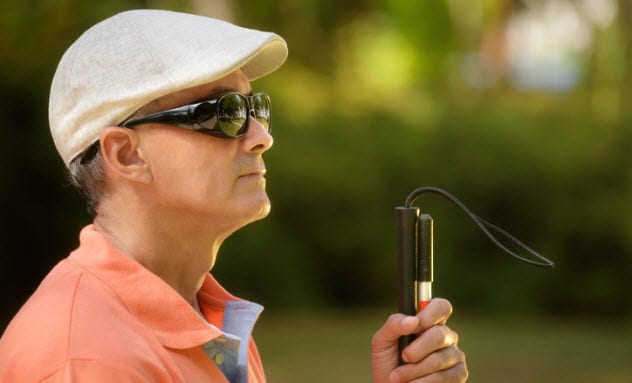
One of the most fascinating forms of hallucination are the intense visual hallucinations of the blind. It’s actually rather common for blind people to see things that aren’t there or that they wouldn’t be capable of seeing.
These natural, nonpsychotic “trips” are precise, clear, and often elaborate. The experiencer is usually perfectly sane while seeing 140 small white gnomes prancing around in the snow in synchronization. Many people consider the hallucinations nothing shy of sublime, while others find them terrifying.
Charles Bonnet syndrome is the official name for this. Although the term was coined in the late 1700s, this phenomenon was nothing new. However, few know about it. One 64-year-old blind patient saw snakes crawling into and out of her body. Talk about a wild experience.
It’s estimated that at least 20–30 percent of the visually impaired population have these hallucinations. For obvious reasons, many people don’t feel quite right reporting them to others, including friends or family, for fear of mockery. So that number may be much higher.[5]
5 Sensory Deprivation
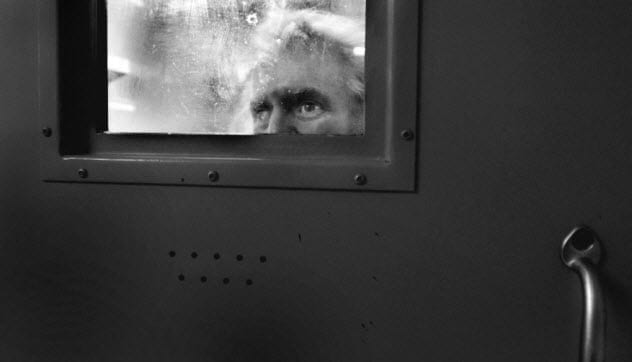
One of the most challenging, terrifying, and unusual experiences is sensory deprivation. The brain was designed for all the senses to take in just the right stimuli to keep the organism alive. It was not intended to be deprived of these things.
This happens because the brain tries to adjust to the new level of sensory input, which is far different than normal. Any incremental changes are experienced as unusual and new phenomena.
This corresponds to hallucinations from excitation, where the brain is starved for new sensations but their input has been strongly blunted. It is much like a starved person who doesn’t need a full meal to be satisfied as he readjusts to a life with food again.
When the brain receives no sensory input for sound for long enough, it eventually begins to invent things from whatever hints of sound it supposes are there. People end up hearing imaginary voices and full-on conversations inside their heads.
This coincides with both the visual hallucinations of the blind and phantom limb syndrome, in which an amputee experiences sensations in a part of the body which is gone. The brain doesn’t receive the input it’s used to, so it just makes up whatever it thinks might be there.[6]
4 Schizophrenia
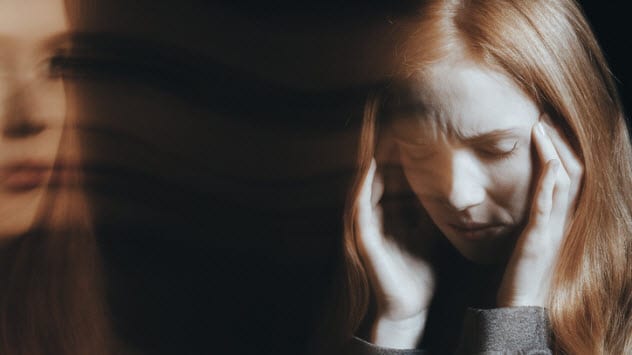
One of the tragic hallmarks of schizophrenia is vivid hallucinations. These often present in the form of annoyances–such as hums, buzzes, and noises—for the person suffering from the affliction. Imagine having a hummingbird or an insect flying right next to your ear for several hours.
The visual hallucinations are much like the static of an old TV set displayed over the person’s field of vision. It’s like seeing the world through the craziest photo-video filter you can think of. Schizophrenia is a disease which gives people all sorts of hallucinations, not just those auditory ones mentioned already, but tactile, visual hallucinations where they close their eyes and “sense” themselves in other worlds.[7]
Hearing voices or sometimes seeing and hearing people who aren’t in the room are common experiences in those diagnosed with schizophrenia. Having people whom these patients trust to tell them what is actually going on in the outside world is absolutely vital for many people with this disease.
With a nearly constant state of mind that misinterprets the inputs that the brain is receiving, it’s no wonder that this terrifying disease leads down the path of delusional thinking and behaviors. How do you know what’s real if all your sensations are lying to you at least a little bit?
3 Trance States

When humans didn’t have access to powerful drugs, they relied on a simpler and much more personal way of achieving the desired hallucinations through trance states and self-hypnosis. We’ve all heard that drugs such as dimethyltryptamine (DMT) can transport someone out of his body into what’s seemingly another world. But did you know that we can do this simply with the power of our minds?
This process is called autoscopic hallucination. The person transcends his body and experiences another world which is totally in his mind. For a few seconds or possibly minutes, a person is “out of his body” like a short, strong drug trip or near-death experience.
Autoscopic hallucinations can come from the trance states inspired by deep meditation and other means by which people transcend reality using nothing more than their mental faculties. Believe it or not, self-hypnosis is a very real thing. It can be achieved through concentrating on a single focal point, using the power of the mind to eliminate your surroundings, and replacing them with something totally hallucinated.[8]
This may be the oldest form of intentional hallucination, perhaps besides mushrooms or other substances which can bring about such states. But don’t underestimate the power of the mind to intentionally conjure up hallucinations.
2 Epilepsy
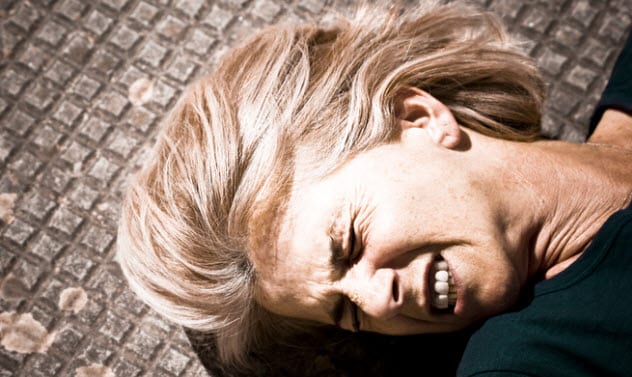
Different types of epilepsy can cause different types of seizures and experiences in the affected individuals. Sadly, much like those with paranoid schizophrenia, epilepsy sufferers can have hallucinations accompanied by a fear of persecution or a feeling that someone is out to get them for some time before the onset of a seizure.
It is now being discovered that epilepsy can also cause powerful auditory hallucinations. This happens when the left temporal lobe is damaged. We’re not talking about the fuzz or chatter of other types of hallucinations but extremely complex strings of sound heard by the afflicted person.
We’re slowly starting to piece together the entire story of how epilepsy affects the brain, but it is known that some people experience extremely powerful hallucinations and sometimes a feeling of transcendence. About 80 percent of seizures in those with temporal lobe epilepsy are focal aware, otherwise known as aura seizures.
Although the patient is conscious during the whole seizure, he hallucinates the entire time. This type of seizure only affects one portion of the brain and can produce vivid, astonishing hallucinations.[9]
1 Drugs
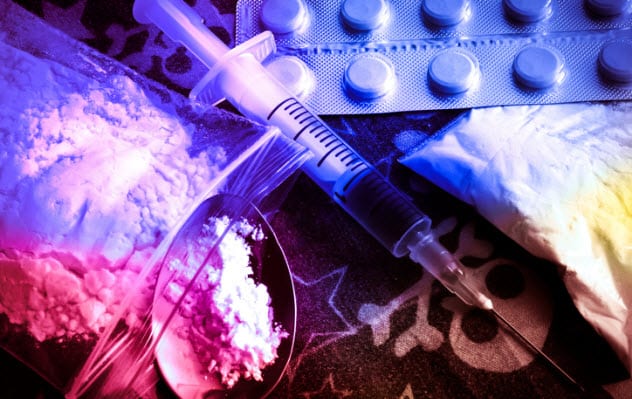
Probably the best-known form of hallucinatory experience in most places is the use of drugs or other mind-altering substances. From LSD to psilocybin, the way that chemicals affect the brain to cause hallucinations has often been described as “jamming the circuits.”[10]
The transmission of information, usually by way of chemical compounds in the nervous system, creates an excessive stimulation of the senses, at least perceptively. Drugs are the synthetic way to produce sensory overload, and things become transposed and blurred. Anyone who’s taken these drugs will know exactly what I’m talking about.
A lot of science backs the idea that these sorts of chemically induced states are actually quite good for your physical and psychological health. Other hallucinations happen when people intentionally or accidentally poison themselves with certain plants.
These methods have been practiced by humans to achieve hallucinatory experiences for thousands of years. Some of these plants were considered to be medicinal by ancient and tribal cultures. Now science may be confirming their beliefs.
I like to write about the weird, the dark, odd, and unusual. Here’s a fun little piece on different types of hallucinations.
Read about more syndromes that cause hallucinations on 10 Crazy Syndromes That Change The Way You See The World and 10 Bizarre Brain Disorders Often Mistaken For Psychiatric Conditions.








